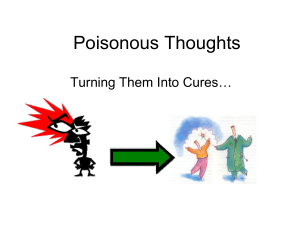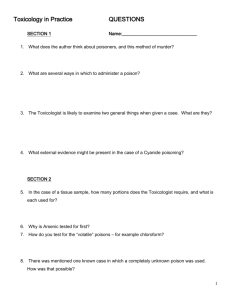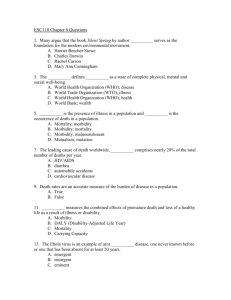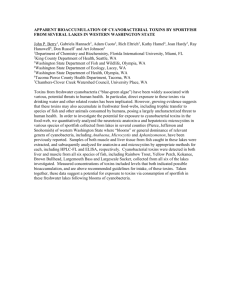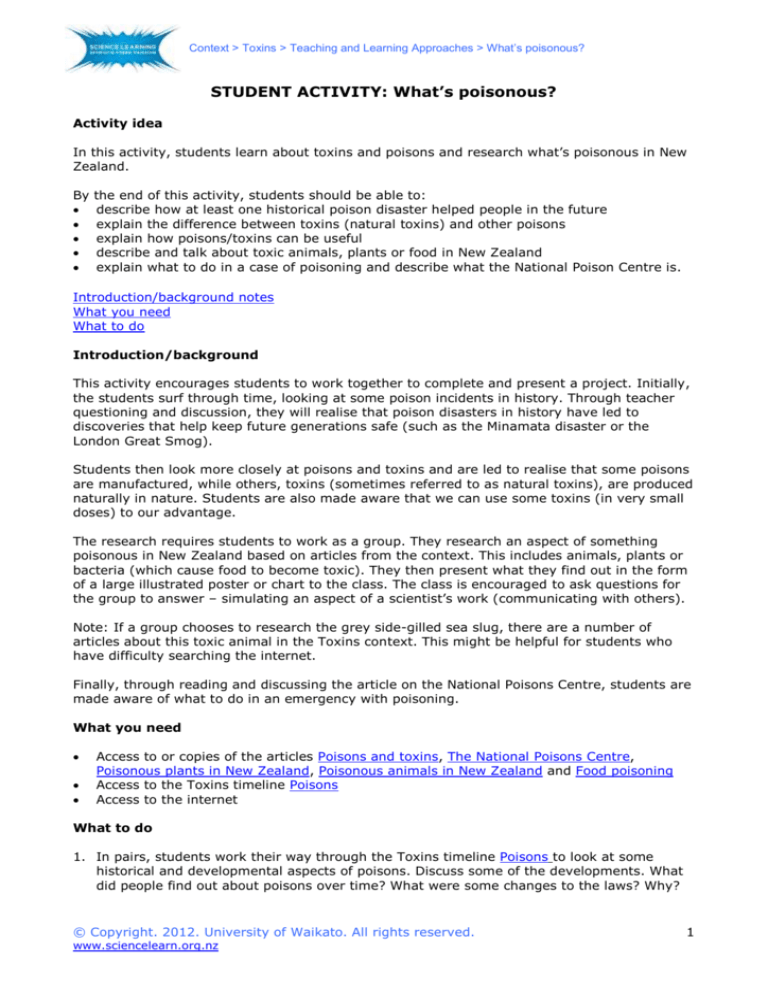
Context > Toxins > Teaching and Learning Approaches > What’s poisonous?
STUDENT ACTIVITY: What’s poisonous?
Activity idea
In this activity, students learn about toxins and poisons and research what’s poisonous in New
Zealand.
By
the end of this activity, students should be able to:
describe how at least one historical poison disaster helped people in the future
explain the difference between toxins (natural toxins) and other poisons
explain how poisons/toxins can be useful
describe and talk about toxic animals, plants or food in New Zealand
explain what to do in a case of poisoning and describe what the National Poison Centre is.
Introduction/background notes
What you need
What to do
Introduction/background
This activity encourages students to work together to complete and present a project. Initially,
the students surf through time, looking at some poison incidents in history. Through teacher
questioning and discussion, they will realise that poison disasters in history have led to
discoveries that help keep future generations safe (such as the Minamata disaster or the
London Great Smog).
Students then look more closely at poisons and toxins and are led to realise that some poisons
are manufactured, while others, toxins (sometimes referred to as natural toxins), are produced
naturally in nature. Students are also made aware that we can use some toxins (in very small
doses) to our advantage.
The research requires students to work as a group. They research an aspect of something
poisonous in New Zealand based on articles from the context. This includes animals, plants or
bacteria (which cause food to become toxic). They then present what they find out in the form
of a large illustrated poster or chart to the class. The class is encouraged to ask questions for
the group to answer – simulating an aspect of a scientist’s work (communicating with others).
Note: If a group chooses to research the grey side-gilled sea slug, there are a number of
articles about this toxic animal in the Toxins context. This might be helpful for students who
have difficulty searching the internet.
Finally, through reading and discussing the article on the National Poisons Centre, students are
made aware of what to do in an emergency with poisoning.
What you need
Access to or copies of the articles Poisons and toxins, The National Poisons Centre,
Poisonous plants in New Zealand, Poisonous animals in New Zealand and Food poisoning
Access to the Toxins timeline Poisons
Access to the internet
What to do
1. In pairs, students work their way through the Toxins timeline Poisons to look at some
historical and developmental aspects of poisons. Discuss some of the developments. What
did people find out about poisons over time? What were some changes to the laws? Why?
© Copyright. 2012. University of Waikato. All rights reserved.
www.sciencelearn.org.nz
1
Context > Toxins > Teaching and Learning Approaches > What’s poisonous?
2. Have students search the internet for ‘Minamata disaster’. What happened? What did
people learn from this?
3. Find out what a poison and a toxin is. In small groups or pairs, have students read Poisons
and toxins. This article makes a distinction between a general poison and a toxin. Some
scientists don’t recognise this distinction. To them, poisons and toxins are the same. They
use the term ‘natural toxins’ or ‘biotoxins’ to describe poisons produced within or by living
organisms. Also in this article, the deadly toxin botulinum is mentioned. Botulinum is the
most powerful neurotoxin ever discovered. What is a neurotoxin? Find out how it affects
organisms (including people). Can you see why botulinum (in very, very small doses) is
used for reducing wrinkling of the skin? It is also used for sedation. Search the internet and
find out how else toxins can be useful. (Try searching ‘uses for toxins’, ‘natural toxins and
pesticides’, ‘toxins and medicines’.)
Research activity
4. Divide the class into groups of about 3–4. One-third of these groups researches toxic
animals in New Zealand, another third of these groups researches toxic plants in New
Zealand and the remaining third researches food poisoning. Each group develops a poster
or chart about an aspect of their research to share with the class.
5. Each group initially reads the article relevant to them – Poisonous plants in New Zealand,
Poisonous animals in New Zealand or Food poisoning.
6. Students choose an aspect of the article they would like to pursue further such as
poisonous fungi, poisonous spiders, Campylobacter or ways to avoid food poisoning.
7. Students find out more about their chosen topic using the internet.
8. Students design and a make poster or chart as a group on chosen topics.
9. Each group presents their poster to the class. Each person in the group contributes to the
presentation.
10. Allow time for the class to put questions to the groups to answer. Initially, you may need to
encourage the class to think of questions while a group is presenting. Encourage them to
write the questions down and ask them at the end.
11. Finally, as a class, read and discuss the article on The National Poisons Centre.
© Copyright. 2012. University of Waikato. All rights reserved.
www.sciencelearn.org.nz
2


